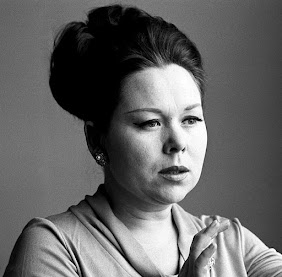Singer who stood in for Callas became an international star
 |
| After making her debut in 1952, Scotto had established herself as a star within five years |
Admired for her musicality and acting ability, Scotto was one of the most popular singers during the bel canto revival of the 1960s, performing throughout Italy, and in the UK, America, Russia, Japan, Spain, France and Germany.
She sang opposite great tenors such as Mario del Monaco, Alfredo Kraus and Luciano Pavarotti.
Scotto made her stage debut on Christmas Eve 1952 at the age of 18 as Violetta in Giuseppe Verdi’s La traviata, singing to a sold-out house in Savona, her home town. The next day she made her official debut at the Teatro Nuovo in Milan as Violetta. Shortly afterwards, she performed in Giacomo Puccini’s Madama Butterfly in Savona.
In 1953 she appeared at Teatro alla Scala in Milan as Walter in Alfredo Catalani's La Wally alongside Renata Tebaldi and Mario del Monaco and, on the opening night, was called back for 15 curtain calls.
At the Edinburgh Festival in 1957 she stood in for Maria Callas, who had refused to appear saying she was ill, as Amina in La Scala’s production of Vincenzo Bellini’s La sonnambula. The performance was a great success and Scotto, at the age of 23, had become an international opera star.
 |
| Scotto also achieved much success as a director |
For more than 40 years, Scotto performed more than 45 different roles in operas written by Donizetti, Meyerbeer, Verdi, Puccini, Bellini, Ponchielli and many more composers.
In 1960, she married Lorenzo Anselmi, who was the first violinist at La Scala. They had two children and eventually the family made their home in America, where Scotto had great success at the Metropolitan Opera House in New York. Lorenzo died in 2021 at the age of 87, by which time they had moved back to Italy, returning to Savona.
Since the 1990s, Scotto has been a stage director with many credits to her name. She won an Emmy Award for her telecast of La traviata at New York City Opera in 1995. In 2009, she won an Anton Coppola Award for Excellence in the Arts.
Renata Scotto celebrates her 88th birthday today.
 |
| Savona, a centre for shipbuilding, used to have many iron works and foundaries |
Liguria’s third largest city after Genoa and La Spezia, Savona used to be one of the biggest centres of the Italian iron industry, the iron works and foundries providing materials for shipbuilding and railways among other things. It also has a busy port but as well as industrial areas the city has a charming medieval centre containing architectural gems such as the Baroque Cattedrale di Nostra Signora Assunta - behind which is Italy’s other Sistine Chapel, like the Rome version erected by Pope Sixtus IV - and the Fortezza del Priamar, built by the Genoese in 1542 after their conquest of the city and later used a prison. The popes Sixtus IV and Julius II were born in the city and it was there in 1830 that the revolutionary Giuseppe Mazzini was imprisoned. Food specialities include gnocchi with nettles, bardenulla (white polenta flavoured with leek and mushrooms) and tagliatelle with mushrooms.
Find accommodation in Savona with Booking.com
 |
| The Teatro Nuovo in Milan is part of a modern shopping complex |
The Teatro Nuovo theatre in Milan, where Scotto made her official debut in Verdi’s La traviata in 1952, is located on the Piazza San Babila in the lower level of the Palazzo del Toro. It was designed by architect Emilio Lancia and was the project of the impresario Remigio Paone. It was inaugurated in December 1938 with a performance of Eduardo De Filippo's comedy Ditegli sempre di sì. Piazza San Babila is characterised by the presence of a fountain built in 1997 by the architect Luigi Caccia Dominioni in conjunction with the Ente Fiera Milano.
Stay in Milan with Booking.com
More reading:
Powerful voice made Mario del Monaco the perfect Otello
A star who prospered despite Madama Butterfly debut flop
The tragedy of Alfredo Catalani's early death
Also on this day:
1607: The debut of Monteverdi’s first opera, L’Orfeo
1896: The birth of restaurateur Cesare ‘Caesar’ Cardini
1934: The birth of politician Bettino Craxi
1990: The death of former president Sandro Pertini
(Picture credits: Savona by Andrea Ridács via Pixabay)








